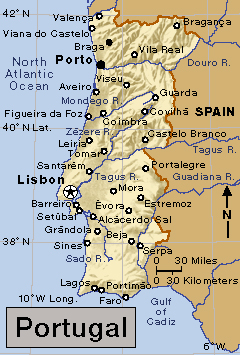Portuguese, the official language of Portugal in western Europe, ranks among the most spoken languages in the world. Some 220 million people speak Portuguese as their native tongue. Interestingly, a large majority of lusófonos (Lusophones)—that is, speakers of Portuguese—live outside the language’s country of origin, which has a population of about 9.75 million. The largest number of Portuguese speakers, some 209 million of them, are found in the South American nation of Brazil.
In addition to Portugal and Brazil, other countries where Portuguese has official-language status include Angola, Cabo Verde, East Timor, Equatorial Guinea, Guinea-Bissau, Mozambique, and São Tomé and Príncipe. Portuguese also is a co-official language of Macau, an administrative region of China. Portuguese speakers can be found in many other countries as well, including hundreds of thousands in Canada and the United States.

Like French, Italian, and Spanish, Portuguese is a Romance language. Such languages developed from the Latin spoken by the ancient Romans. The Romans conquered many lands, including the Iberian Peninsula that is home to Portugal and Spain. The Romans called the Portuguese portion of Iberia Lusitania, which is why Portuguese speakers are called Lusophones. The Spanish language, a sort of older sibling to Portuguese, developed from Latin first. Portuguese then evolved from the Galician-Portuguese dialect of Spanish in the 1100’s and became a separate tongue.

Portuguese explorers and colonizers carried their language to other parts of the world beginning in the 1400’s. Portugal’s empire extended into Africa, Asia, and South America. In Brazil, a possession of Portugal from 1500 to 1822, Portuguese absorbed words from the languages of the indigenous people and African slaves. Today, Brazilian Portuguese has as similar relation to European Portuguese as American English has to British English. The two forms are very similar but vary in pronunciation and have some differences in grammar, spelling, and vocabulary.
Like other Romance languages and English, Portuguese is written using a Roman alphabet. The Portuguese alphabet has 26 letters. Small marks called diacritics show how to pronounce certain letters and which syllables to stress.
More than a collection of 26 symbols, the Portuguese language is part of a rich musical and literary culture. Popular music forms from Lusophone countries include Brazilian samba and bossa nova, and Portuguese fado, which is characterized by melancholy lyrics and guitar accompaniment. Two styles of Portuguese music—fado and cante alentejano—are on UNESCO’s Lists of Intangible Cultural Heritage. Cante alentejano, named after the Alentejo region of southern Portugal, is a traditional style of unaccompanied singing. Important Portuguese authors since the 1400’s include the poets Luís de Camões and Fernando Pessoa, as well as the novelists José Maria de Eça de Queirós and José Saramago. Saramago in 1998 won the Nobel Prize for literature. The Instituto Camões in Lisbon, Portugal, and the International Institute of the Portuguese Language in Praia, Cabo Verde, promote Portuguese language and culture.
Image 1: The Portuguese flag once flew over a vast empire. The legacy of the empire lives on in the millions of Portuguese speakers around the world. Credit: © Mehmet Buma, Shutterstock
Image 2: Portugal. Credit: WORLD BOOK map
Image 3: The Brazilian flag flies over more than 200 million Portuguese speakers. The white band stretching across the circle bears the motto Order and Progress in Portuguese, Brazil’s official language. Credit: © Lukasz Stefanski, Shutterstock